#z80
Explore tagged Tumblr posts
Text
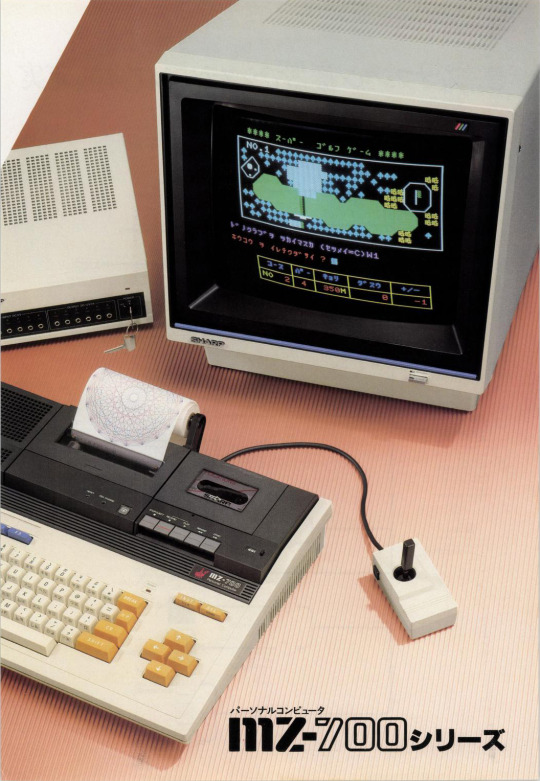
Sharp MZ-731 (1982)
532 notes
·
View notes
Text



With the Z80 towards the stars. To the edge of the galaxy
-
MSX Screen2, displayed via MSXBook
#my art#pixel art#Signalis#Elster#elster signalis#lstr 512#MSX#MSXBook#SC2#Screen2#vintage computer#Z80
41 notes
·
View notes
Text
The Dutch Holborn System 6100/6140 is a very rare machine (and very funky design), only 100 of them were made. The system specifications: • Zilog Z80 CPU @ 3.5 MHz • 72 KB RAM (expandable to 192 KB) • 8-inch floppy drives
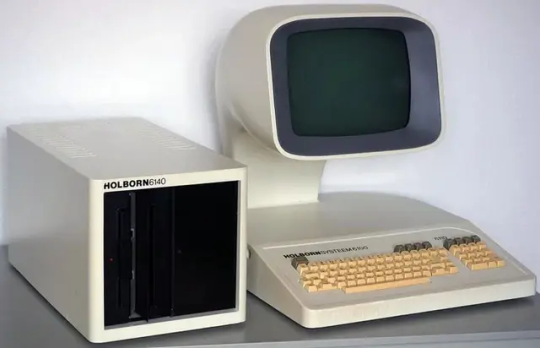
The Dutch Computer Museum has a working one, they made the video below
351 notes
·
View notes
Text



Long Live the Z80! - David Henderson
VCF West XVIII
#vcfwxviii#vcf west xviii#vintage computer festival west xviii#commodorez goes to vcfwxviii#z80#zilog z80#trs-80 model i
38 notes
·
View notes
Note
ld hl, text call ti.PrintS text: db "Opinions of Z80?"
I must admit I haven't used Z80, or any 8 bit assembly languages, so can't speak from first hand experience. But I just read up on it a bit, and it seems cool. I like that it's compatible with the older 8080, when possible I think backwards compatibility is something that should be strived for. And it seems they added a bunch more instructions, and simplified some things, which is obviously a nice thing for the programmer.
It being 8-bit based makes its applications in 2024 limited, but I'm sure it was great in its time!
8 notes
·
View notes
Text
Of all the extensions to the 8080 instruction set I would've made, "second set of 'shadow' registers you can't interact with directly, only exchange with the primary set" would not have been one of them. In retrospect I can totally see why it would be useful, but it absolutely would not have occurred to me in vacuo. I guess that's why they let Federico Faggin design microprocessors and not me.
10 notes
·
View notes
Text
youtube
Artist Feature #30: Paul Hutchinson
Paul “Z80GameCoder” Hutchinson grew up surrounded by pirate radio in London, and he brought some of that with him to Sega of America. Let’s take a look at some newly uncovered examples!
premieres in about 15 minutes! join us in chat!
3 notes
·
View notes
Text
youtube
The Minimoan is a genuine 8-bit computer made up with modern components and replacements. This homebrew computer is ideal for educational purposes, as its extremely simple architecture will encourage anyone to comprehend its structure and functionality in full depth. It has a z80 CPU and it's fully compatible with the original zx81 computer.
3 notes
·
View notes
Text
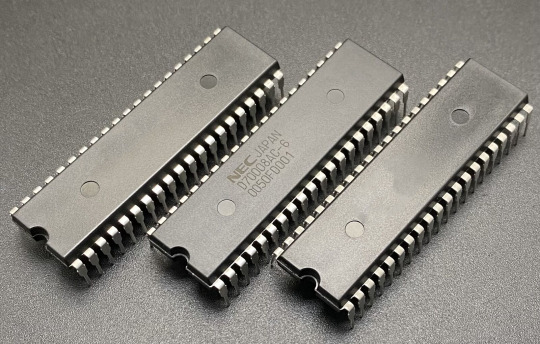
Ladies and gentlemen...
Today, we gather not to mourn, but to celebrate the remarkable journey of an iconic piece of technology—the Zilog Z80 microprocessor. As we mark the official retirement of the Z80, we reflect on its enduring legacy that began over four decades ago.
The Z80 was more than just a collection of circuits; it was the cornerstone of a technological revolution. Introduced in 1976 by Zilog, founded by Federico Faggin and Ralph Ungermann, the Z80 quickly became a beloved figure in the world of computing. Its design was a masterpiece of innovation, combining power with versatility, and it set a new standard for microprocessors.
In its heyday, the Z80 found its way into some of the most seminal computing systems of the time. It was the brain behind pioneering personal computers like the Osborne 1 and the TRS-80. It powered the Sinclair ZX Spectrum, which introduced countless individuals to the joy of programming and gaming. Moreover, it was crucial in the development of embedded systems and influenced the arcade games that many of us cherished in our youth.
The Z80 was also a tool of education. For many young programmers and engineers, it was their first introduction to the intricacies of machine code and assembly language. It demystified the inner workings of computers, making the digital world more accessible and less daunting.
But beyond its technical achievements, the Z80's real triumph was in its ability to inspire. It sparked a generation of innovators and tinkerers, many of whom have gone on to shape the modern technological landscape. Its influence can be seen in the software we use, the games we play, and the smartphones that are now an integral part of our daily lives.
As we say goodbye to the Z80, we also say thank you. Thank you for your contributions to computing, for democratizing technology, and for inspiring creativity and innovation. Your circuits may have ceased production, but your impact will resonate for generations to come.
So, here's to the Zilog Z80—may your legacy continue to teach and inspire as long as there are stories to be told about the silicon that changed the world. Rest well, old friend, your work here is done, but your journey through the annals of technology history is eternal.
2 notes
·
View notes
Text
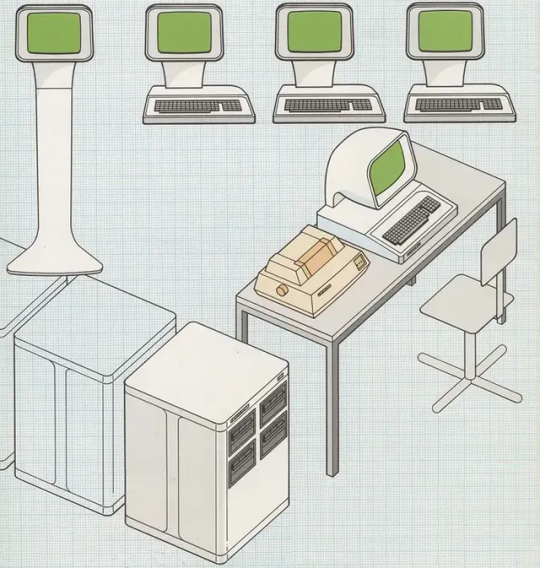
A diagram of Holborn terminals, including one which inspired the design of the Holborn 9120.
Riccardo Bianchini, Inexhibit.com:
the system comprised a single-piece keyboard-monitor console and a massive external unit that contained two floppy drives (an optional 30MB hard disk was also available). There are few doubts that the distinctive hallmark of the Holborn 9100 was its periscope-like 12” built-in monitor protruding from the console.
Image: Technisch Museum
4 notes
·
View notes
Text








Panasonic FS-A1GT (1992)
The Panasonic FS-A1GT MSX turbo R is the last MSX computer ever produced and follows the latest standard for the MSX line.
Originally, in 1990, Yamaha and ASCII announced the V9978 Video Display Processor, the video chip for the MSX3. It was a very capable video IC, with two different sets of video modes. In bitmap modes, it was capable of up to 768 x 240 resolution (up to 768 x 480 in interlace mode), up to 32,768 colors, superposition, hardware scrolling, and even a hardware cursor for Windows-like operating systems. However, the most impressive feature of these modes was the use of a fast hardware bitblock data mover. The MSX2 video IC was also equipped with a hardware bit mover, but the new one would be 20 times faster!
In pattern mode, it was able to use SNES class features. Multiple layers, 16k patterns, different palettes, 128 sprites, maximum 16 sprites per scanline. So basically an SNES but without mode7. However, something went wrong and the project was cancelled. Probably because of the great interest in marketing MSX machines and the growing interest in game consoles and powerful PC-like computers (mainly for word processing purposes), companies were less enthusiastic about making a new MSX machine. MSX's biggest software supporters defected to Nintendo and other computers/gaming machines. Sony chose to make their own game console.
Instead came the MSX Turbo-R, a supercharged MSX2+. Some people say that ASCII failed to deliver the new VDP in time for the 1990 release, so they only opted for the new CPU (named R800). However, the specifications and pinout of the V9978 were in some data books of the era.
Panasonic was the only company to manufacture and market MSX turbo R computers, and they were only sold in Japan. Several machines were imported to Europe via gray market imports.
The FS-A1ST was the first and was succeeded by the FS-A1GT, which had more RAM and MIDI IN and OUT.
After these two machines, it ended when Panasonic moved to their 3DO game console.
Detailed Specifications
CPU R800 (DAR800-X0G), with 28.63630 MHz external clock and 16-bit ALU.
CPU Z80A 3.579545MHz compatible (included in the MSX-Engine)
256kB of main RAM (can be natively expanded to 512kB internally)
16kB SRAM for backup (used internally)
32kB BASIC/BIOS ROM and 32kB sub-ROM
TC8566AF disk controller
3.5" double sided double density (720kB) disk drive
S1990 MSX Bus-controller
T9769C MSX-ENGINE (also contains Z80A & AY-3-8910)
MSX-JE��(a simple Kanji input interface)
Kanji-ROM with approx. 32000 characters
MSX-Music (Yamaha YM-2413 OPLL)
DAC to PCM 8-bit sample rate up to 16kHz
Internal microphone for the PCM unit
More info: https://www.msx.org/wiki/Panasonic_FS-A1ST
#msx#msx2#old tech#panasonic#vintage computer#computer#8bit#z80#industrial design#retrogaming#retro gaming#hardware#electronics#retrocomputing#retro computing#retro tech#retro games#japan#japan only#japan computer#90s
28 notes
·
View notes
Text
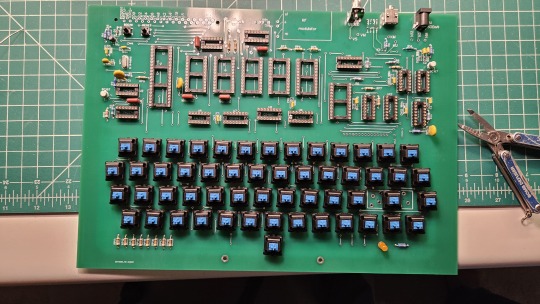
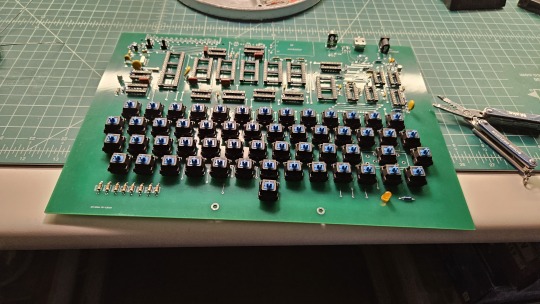
Assembly of a modern Galaksija replica, a Yugoslavian Z80-based computer, the instructions of which were found in magazines and described in radio broadcasts in the 80s in its native country.
438 notes
·
View notes
Link
2 notes
·
View notes
Text

Innokin Coolfire Zenith Z80 NEX Vape Kit
The Innokin Coolfire Z80 NEX vape kit is a durable and stylish sub-ohm device. It runs on a single removable and rechargeable 18650 battery, offering enough power to last most users all day without recharging.
#PuffInStyle#DisposableVapeKing#VapeOnTheGo#NicotineBuzz#LongLastingVape#ninjavapes#ninjavapesuk#ukvapeshope#ukvapes#innokin#coolfire#zenith#z80#nexvapekit
0 notes
Text

We gotta get the fuck outta here man
1 note
·
View note
